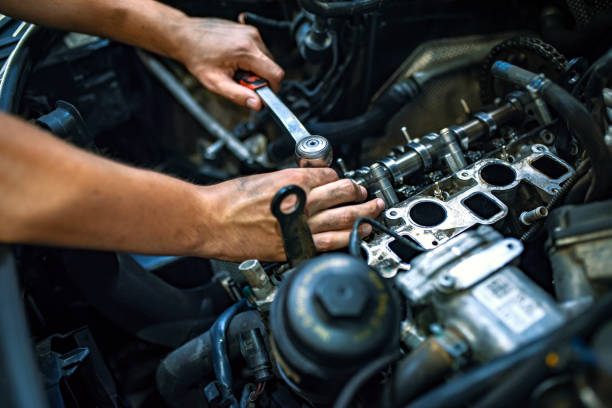Notifications

8 minutes, 26 seconds
-2 Views 0 Comments 0 Likes 0 Reviews

There is a special kind of pride in turning the key after a driveway service session and hearing the engine whisper a perfect hello. It is more than just fixing a car. It is a connection. A ritual. The sound of self-reliance echoing through every bolt you tighten and every panel you clean. With a little patience, a few basic tools, and the right guidance, many everyday vehicle troubles can be solved in your own garage. It is not about being an expert. It is about trusting your hands to learn something new.
Every scratch, every smudge, and even the moments of second guessing become part of a story. And that story builds confidence with every successful fix. The next time your car groans, squeaks, or simply does not feel quite right, you may already have the solution parked right beside your curiosity.
Before you dive in, create a space that works for you. Choose a clean, level surface with good light — natural daylight is ideal but a strong LED shop lamp works wonders after dusk. Safety is your co pilot, so make sure the ground is solid and free of clutter.
Gather the basics:
Socket wrench set
Flathead and Phillips screwdrivers
A hydraulic jack and sturdy jack stands
Tire pressure gauge
Oil drain pan
Microfiber cloths and cleaning rags
Funnel, gloves, and safety goggles
Keep a small magnetic tray nearby to hold bolts and screws, and always have a notebook or phone handy to take notes or snap before and after photos.
Now, put on your favorite playlist — the one that makes you feel like anything is possible — and give yourself permission to get messy, make a few mistakes, and learn by doing. The garage becomes your classroom. The car, your patient. And you, the weekend mechanic writing your own repair success story.
A short walk around the car can reveal early signs of rust, chipped paint, or a cracked mirror. If you spot damage, swapping in fresh body parts for cars is often as easy as removing a few fasteners and installing the new piece.
Wash with a gentle shampoo that keeps the clear coat happy
Dry with a waffle weave towel to avoid water spots
Apply a thin coat of polymer sealant for long lasting gloss
Treat rubber seals with silicone spray to stop squeaks
Touch up paint chips before corrosion takes hold

Oil, coolant, windshield washer solution, and brake fluid all have clear reservoirs or dipsticks. Use a funnel, never mix fluid types, and write the refill date in a small log you keep in the glove compartment.
Do not forget the humble spark plug. A worn electrode steals power and fuel economy yet replacement takes minutes. Check the gap with a feeler gauge, thread each one by hand, then torque to specification.
A dusty filter strains the blower motor and fills the cabin with allergens. Open the glove box, release the side clips, slide out the old element, and snap in the new one. Fresh air in under five minutes.
A nail in the tread does not have to ruin an otherwise healthy tire. Use a plug kit, ream the hole, insert the gummy cord, trim it flush, then reinflate. Monitor pressure afterward and replace the tire if the sidewall is hurt.
If the serpentine belt chirps each time you start the engine, relieve the tensioner with a breaker bar, ease off the belt, and install a fresh one. Follow the routing diagram under the hood and confirm it seats fully in every groove.
Torque wrench for precise clamping
Multimeter for hunting electrical gremlins
Code reader to translate the check engine lamp
Plastic trim levers to avoid scratches on interior panels
Jack stand pads to protect concrete and asphalt
Brakes speak through sound and feel. A soft pedal, a high pitched squeal, or longer stopping distance tells you the friction surfaces need attention. On most cars the pads slide free once two guide pins come out. Rotors often release after the caliper is safely supported.
You will find the exact brake pad set for almost any make inside the PartEazy catalog. PartEazy is your go to destination for premium car and truck parts and accessories. Whether you enjoy do it yourself projects, you are a professional mechanic, a performance upgrader, or simply need an affordable fix, we offer high quality products and exceptional service to keep your vehicle running at its best.
Turn your driveway into a workshop. Visit PartEazy today and let your next repair adventure begin.
How often should I change my engine oil at home?
Every five thousand to eight thousand kilometers with synthetic oil under normal driving. Follow the schedule in the owner manual for the best results.
Can I bleed brakes without a vacuum pump?
Yes. The two person method works. One person pumps and holds the pedal while the other opens and closes the bleeder screw until no air bubbles appear. Keep the reservoir topped up during the process.
Is it safe to jack a car on asphalt?
It is safe if the ground is level and you place a wide jack base or pad under the jack. In hot weather use a thick board to stop the jack from sinking.
Why did my check engine light appear after changing the battery?
The computer resets when power is lost and needs time to relearn idle trim. Drive for a few trips. If the light stays on, scan the code and fix the specific item.
Where can I recycle old automotive fluids
Most service stations or municipal recycling centers accept used oil, coolant, and brake fluid free of charge. Store each type in a sealed labeled container and transport them upright.
parteazy CarMaintenance DIYCarFixes HomeGarageProjects AutoRepairTips EasyCarRepairs

